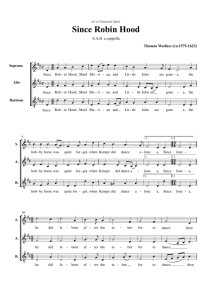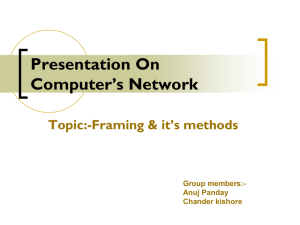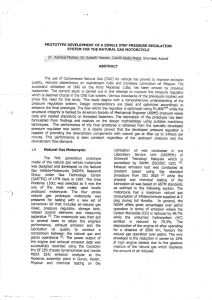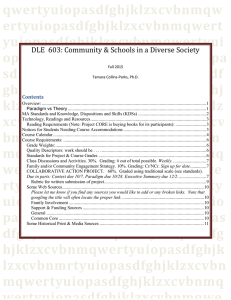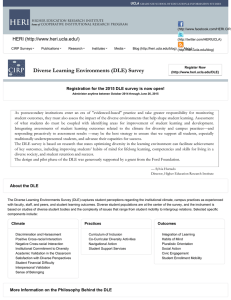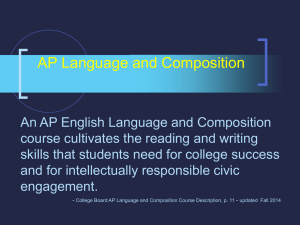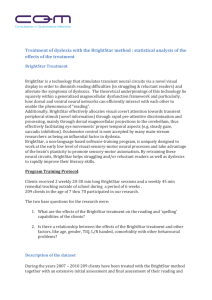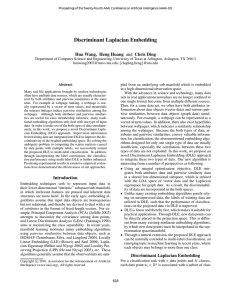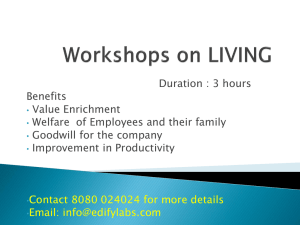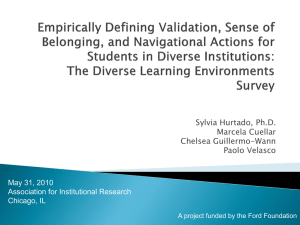SustainableImplementationofa90
advertisement
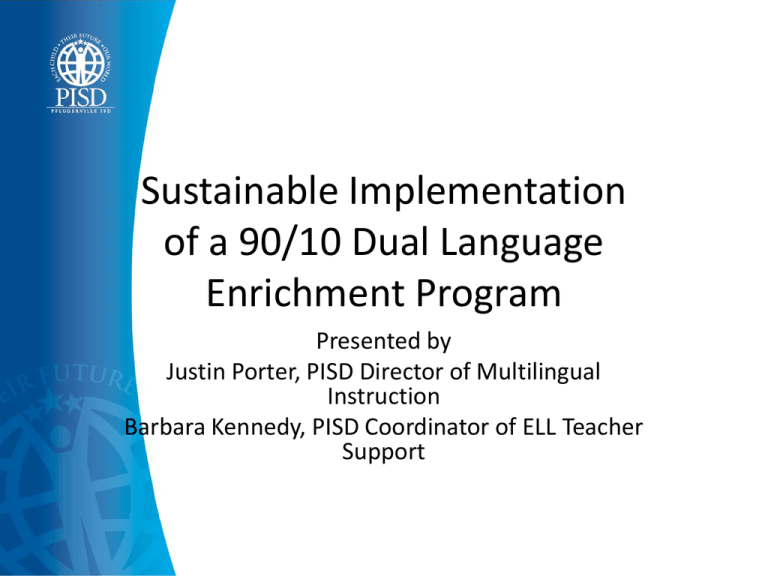
Sustainable Implementation of a 90/10 Dual Language Enrichment Program Presented by Justin Porter, PISD Director of Multilingual Instruction Barbara Kennedy, PISD Coordinator of ELL Teacher Support Agenda • Initial implementation of one-way 90/10 program • Addition of a two-way 90/10 program • Lessons learned and resources Getting started • District culture already supported late exit transitional program • 90/10 was the model selected because the research suggests that it delivers slightly better results in regard to academic performance and bilingualism • The district-wide adoption of one-way DLE represents an integral step in the move toward the creation of a sustainable twoway DLE program Sustainability • Alignment of one-way and two-way DLE programs allows for Flexibility in terms of staffing Maximizing instructional resources Streamlining of professional development Continuity of services among campuses Language of Instruction Framework Instructional 90 minutes oracy Time in English* 100 min math, 225 min enrichment** 75 min oracy 285 min math, 225 min enrichment, 75 min oracy 350 min math, 225 min science, 900 min reading/lang arts, 225 min social studies Kinder 100 min science, 450 min math, 225 min enrichment 300 min science, 600 min math, 225 min enrichment 300 min reading/ lang arts, 300 min science, 600 min math, 225 min enrichment 165 min math, 225 min science, 900 min reading/lang arts, 225 min social studies 125 min science, 900 min reading/lang arts, 225 min social studies 600 min reading/ lang arts, 225 min social studies 300 min reading/ lang arts, 225 min social studies 1st Grade 2nd Grade 3rd Grade 4th - 5th Gade Instructional Time in Spanish PreKinder Local Exit Criteria • Second language academic success is tied directly to first language proficiency • PISD students meet all specific criteria in the law in order to exit the program and must also demonstrate end-of-year 5th grade proficiency in Spanish reading Initial Professional Development DLE Language of Instruction Framework • Research base (Thomas and Collier) • Overview of the Framework document • Discussion/problem solving of classroom scenarios • Q&A Monitoring and Support Monitor through • frequent classroom walkthroughs • attendance at LPAC meetings • collection and review of LPAC paperwork Support through • targeted professional development • lesson modeling, team teaching, guided planning • program and Framework adjustments Continuing Support Code-switching • Campus initiated • Addendum to the Framework document Spiraling/chunking • Teacher initiated • Teaching the content in two languages 4th and 5th grade Cohort Challenges • Philosophical shift and achieving “buy-in” • Implementation of literacy instruction in two languages through the end of fifth grade • Delivery of content instruction in appropriately accommodated English • Providing appropriate Tier 1 intervention • Making appropriate language of assessment decisions Tier 2 and Tier 3 Interventions for struggling DLE students Challenges • Identification of DLE students in need of intervention • Selecting appropriate language for delivering intervention • Alignment of intervention activities and classroom instruction (language mismatch) • Making language of assessment decisions From One-Way to Two-Way • Surveys Faculty Staff Parents and community members • PISD ELL Task Force Data analysis Recommendation From One-Way to Two-Way • Parent information sessions Publicized on the web, through campus communications, and at local preschools Presentation included research base and program design • Parent contract Requires minimum 6-year commitment • Parents must sign in order to be considered • Contract must be turned in directly to the department for receipt From One-Way to Two-Way • Eligibility Any non-LEP, kindergarten-aged student residing within the school district boundaries No pre-screening • Lottery Process by which students are selected for participation Publicly announced Performed by a third party Open to the public • EHBE (REGULATION) Lessons Learned • Expect it to take a long time • Understand that this is not just a change in models, but a change in the way we think – and talk - about educating linguistically diverse children • Understand, use, and model the vocabulary and language of DLE • Encourage staff to adopt and use the language of DLE as well Lessons Learned • Monitor, monitor, monitor • Never assume understanding • Focus on informal as well as formal leaders • Be aware that parents may view DLE as an elite program Resources • • • • • • • • • Bilingual Program Comparison Chart Initial Framework Training PowerPoint DLE Parent Meeting Flyer DLE Receipt of Contract DLE Parent Meeting Presentation PowerPoint Acceptance and Denial Letters Letter of Invitation for Siblings Spanish Dominant Parent Letters SSI Letter Attachment
